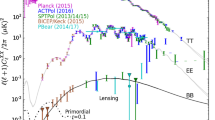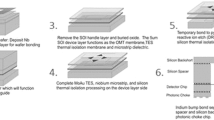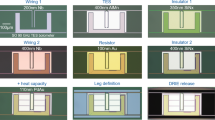Abstract
The LiteBIRD experiment is an international spaceborne mission, led by JAXA, the Japan Aerospace Exploration Agency, to observe cosmic microwave background (CMB) radiation. The satellite will be deployed to measure and characterize the signature of the primordial gravitational waves from cosmic inflation in the B-mode polarization of the CMB radiation. LiteBIRD will also explore the nature of quantum gravity as well as attempt to detect the recombination peak and reionization peak with greater than 5σ significance for a tensor-to-scalar value of r = 0.01. These observations and measurements will take place over 15 separate frequency bands in the range of 34–448 GHz. The 15 frequency channels are separated into three telescopes—low, medium, and high frequency. This paper will describe the process flow developed to fabricate the low frequency detectors, covering bands from 34 to 161 GHz. The detector wafer itself has a device side and a sky side. The device side contains the trichroic polarization sensitive sinuous antennae coupled to transition-edge sensor detectors. The skyside contains the cosmic ray mitigation structure.






Similar content being viewed by others
References
E. Allys et al., Probing cosmic inflation with the LiteBIRD cosmic microwave background polarization survey. LiteBIRD Collaboration. Prog. Theor. Exp. Phys. 2023(4), 04201 (2023)
C.A. Kilbourne et al., in Space Telescopes and Instrumentation 2016: Ultraviolet to Gamma Ray, vol. 9905. (2016), p. 1144
B. Westbrook et al., The polarbear-2 and simons array focal plane fabrication status. J. Low Temp. Phys. (2018). https://doi.org/10.1007/s10909-018-2059-0
B. Westbrook et al., Development of the next generation of multi-chroic antenna-coupled transition edge sensor detectors for CMB polarimetry. J. Low Temp. Phys. (2016). https://doi.org/10.1007/s10909-016-1508-x
Funding
Space Technology Mission Directorate, 80NSSC18K0132, Japan Society for the Promotion of Science, 22K14054
Author information
Authors and Affiliations
Contributions
CR and BW wrote the main manuscript and prepared figures. All authors provided input on elements of device design and process flow. All authors reviewed the manuscript
Corresponding author
Ethics declarations
Conflict of interest
The authors declare no competing interests.
Additional information
Publisher's Note
Springer Nature remains neutral with regard to jurisdictional claims in published maps and institutional affiliations.
Rights and permissions
Springer Nature or its licensor (e.g. a society or other partner) holds exclusive rights to this article under a publishing agreement with the author(s) or other rightsholder(s); author self-archiving of the accepted manuscript version of this article is solely governed by the terms of such publishing agreement and applicable law.
About this article
Cite this article
Raum, C., Westbrook, B., Beckman, S. et al. Fabrication Process Control to Realize High Yield, Uniform, Repeatable Low-Frequency Detector Arrays for the LiteBIRD CMB Experiment. J Low Temp Phys (2024). https://doi.org/10.1007/s10909-024-03129-7
Received:
Accepted:
Published:
DOI: https://doi.org/10.1007/s10909-024-03129-7




